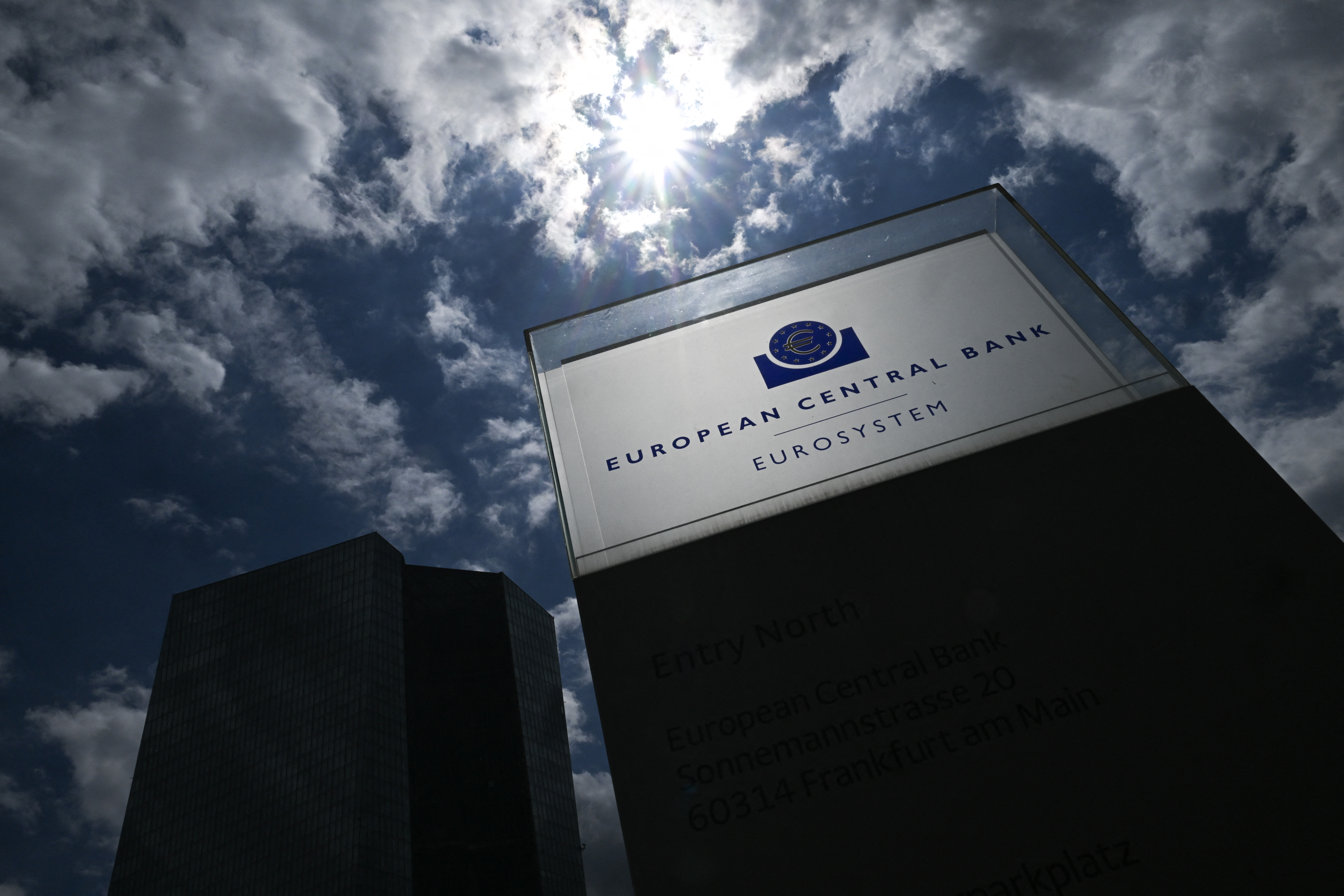
FRANKFURT - The European Central Bank cut borrowing costs from record highs on Thursday, acknowledging progress in its battle against high inflation but also signaling that fight had yet to be won as inflation was set to remain too high until next year.
Inflation in the 20 countries that share the euro has fallen from more than 10 percent in late 2022 to just above the ECB's 2 percent target in recent months, largely thanks to lower fuel costs and a normalization in supply after some post-pandemic snags.
But that progress has stalled recently and what had looked like the start of a major ECB easing cycle only a few weeks ago now appears more uncertain due to signs that euro zone inflation may prove sticky, as has been the case in the United States.
The ECB welcomed the fall in price growth as it trimmed its deposit rate to 3.75 percent from a record 4.0 percent, its first cut since 2019
The ECB welcomed the fall in price growth as it trimmed its deposit rate to 3.75 percent from a record 4.0 percent, its first cut since 2019.
But it also raised its inflation forecasts for this year and the next, stressed any further rate reduction would depend on incoming data and reaffirmed that borrowing costs needed to remain high enough to keep a lid on prices.
ALSO READ: IMF chief urges policymakers to 'deal decisively with inflation and debt'
"Despite the progress over recent quarters, domestic price pressures remain strong as wage growth is elevated, and inflation is likely to stay above target well into next year," the ECB said.
Money market investors trimmed their bets on rate cuts after the announcement and only priced in one, with a slight risk of a second, for the remainder of the year.
With Thursday's move the ECB joins the central banks of Canada, Sweden and Switzerland in undoing some of the steepest streaks of interest rate hikes in recent history.
The US Federal Reserve, which was stopped in its tracks by some stronger-than-expected inflation readings earlier this year, is widely expected to join in after the summer.
Last mile
But some stronger-than-expected data about euro zone inflation, wages and economic activity over the last few weeks has fueled fears of a more difficult "last mile" on the way to the ECB's goal - a concern often expressed by influential board member Isabel Schnabel.
Inflation in services, which some policymakers have singled out as especially relevant because they reflect domestic demand, has been a particular concern after it rebounded to 4.1 percent in May from 3.7 percent a month earlier.
Most economists still expect the ECB to continue cutting its policy rate in the coming months and bring it to 2.50 percent by the end of 2025
Most economists still expect the ECB to continue cutting its policy rate in the coming months and bring it to 2.50 percent by the end of 2025.
ALSO READ: Global inflation not yet defeated, BIS warns
But they see just two more reductions this year, in September and December.
"Further cuts in September and December remain our central case," HSBC economist Fabio Balboni said in a note. "But if the recent resilience in services inflation proves sustained, we see increasing chances that the ECB might have to be more cautious on the way down."
A rebound in growth also reduced the urgency for the ECB by undermining the argument that high rates are choking economic activity.
The real elephant in the room may be the Fed, however, and whether it starts or further delays its own easing cycle.
READ MORE: Fed holds rates steady, flags 'lack of further progress' on inflation
A more restrictive Fed would likely mean a weaker euro and higher imported inflation for the currency bloc, but it would also increase yields on global bond markets - a double whammy whose net effect is hard to predict.
"The pace of rate cuts will be dependent on the US and the Fed," Mohit Kumar, an economist at Jefferies said. "In the event that the Fed doesn't cut rates at all this year - not our base case - we could see only two cuts from the ECB this year."


